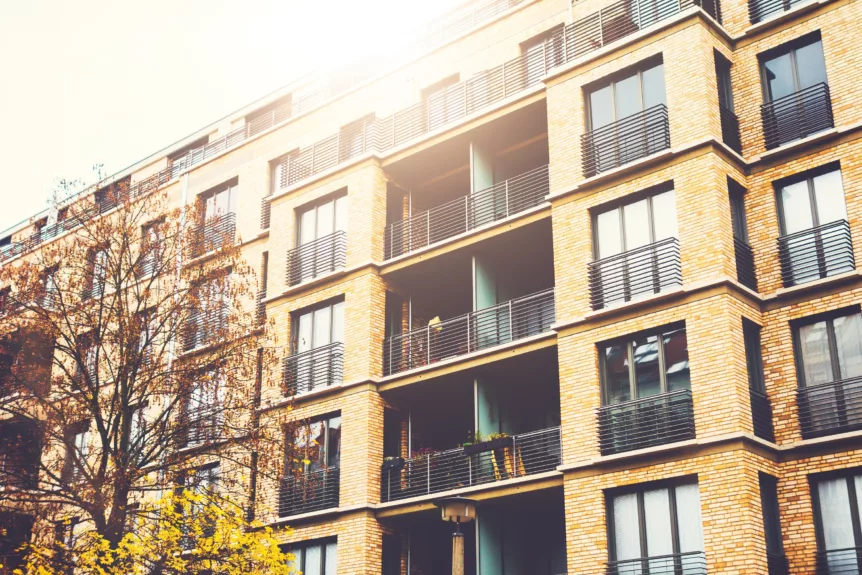How Colorado’s Multifamily Affordable Housing can Benefit from the Inflation Reduction Act and Bipartisan Infrastructure Law
By Ravi Malhotra, Founder and President, ICAST
Colorado Real Estate Journal – Multifamily Properties Quarterly, February 2023
The Inflation Reduction Act (IRA) and Bipartisan Infrastructure Law (BIL) dramatically expand opportunities for multifamily affordable housing (MFAH) to leverage cash rebates, tax credits, and other incentives for preservation and construction. This is a once-in-a-lifetime opportunity to utilize green solutions to cut costs (capital, operating, and maintenance), improve NOI, and increase the health, safety, and affordability for the low-income residents of Colorado’s affordable housing communities both existing and new. Whatever the reason for “going green”, Uncle Sam is prepared to cover the bulk of the costs.
The Federal and state governments have been soliciting input to inform the design and implementation of the various funding sources, so while legislatures and legal experts analyze and create laws and regulations, here’s what those in the MFAH industry should know:
The IRA and BIL passed by Congress in 2022 and 2021 respectively, will make once-in-a-generation historic investments in the energy and transportation sectors improving energy efficiency, public safety and climate resilience, creating jobs across the country, and delivering a more equitable future.
Funds appropriated for the U.S. Department of Energy (DOE) included almost $9 billion for States to implement the High-Efficiency Electric Home Rebate (HEEHR) Program and the Home Energy Performance-Based, Whole House Rebates (HOMES) Program. Both will provide rebates for upgrades such as heat pump-based HVAC and water heaters and offer maximum rebates for MFAH. HOMES will distribute $4.3 billion via direct rebates that will be sized according to energy savings with double the rebate for MFAH. HEEHR will make $4.5 billion available through cash rebates, which can cover the lesser of 100% of project costs or $14,000 per household in MFAH. Where market-rate property owners can receive up to $4,000 for a heat pump HVAC, MFAH properties can receive up to $8,000 for the same HVAC. Colorado will receive over $140 million to implement these programs, and rebates should be available to consumers in early 2024.
The Environmental Protection Agency (EPA) will award $27B through its Greenhouse Gas Reduction (GHGR) Fund, to nonprofits (including CHFA), Green Banks, CDFIs, Credit Unions, to provide low-cost loans for carbon reduction projects such as green upgrades in MFAH. EPA will award another $8 billion in community grants to States, local governments, community-based organizations, and nonprofits for emissions reductions projects such as green upgrades in MFAH. We expect EPA to release their Requests for Proposals by February 2023, and offer the customary six-week application window.
Existing federal tax credit investments received a huge boost through the IRA. The Act increased the Solar Investment Tax Credit (ITC) to 30% and added bonus credits that could increase the ITC for MFAH solar projects to 50%. Many Colorado communities, designated as ‘Energy Communities’, could receive an additional 10% ITC bonus. The ITC now also applies to standalone energy storage projects. And the credits are eligible for direct pay and transferability. The Energy Efficiency Home Credit (45L) was re-upped after its expiration in 2021 and can now provide credits of up to $5,000 for projects that meet DOE’s Net Zero ready requirements. The 45L and ITC have been extended for 10 years. Most importantly, the IRA eliminated the basis reduction for stacking ITC and 45L with LIHTC. Some credits are subject to prevailing wage and apprenticeship requirements, for which Treasury released initial guidance in November 2022.
The BIL provided $3.2 billion for the Weatherization Assistance Program (WAP), and Colorado received $50 million to help MFAH access energy efficiency, solar, and health and safety upgrades. BIL also provided $550 million for the Energy Efficiency and Conservation Block Grant Program (EECBG), which provides grants to nonprofits to perform energy efficiency retrofits. Per draft allocations released in late 2022, Colorado may receive over $5 million. Lastly, BIL created and provided $250 million for an Energy Efficiency Revolving Loan Fund (RLF) Capitalization Grant Program. The WAP funds are already in play.
IRA also provided $2 Billion to the U.S. Department of Agriculture-Rural Development (USDA-RD) for it’s Rural Energy for America (REAP) program, and MFAH can apply as a small business entity for up to $500K grants for energy efficiency and $1M for renewable energy.
The U.S. Department of Housing and Urban Development (HUD) received $1 Billion to implement a ‘Green and Resilient Retrofit Program’ that will provide grants and direct loans for conserving energy and water in HUD-assisted MFAH. The RFP for these funds is expected in late Spring 2023.
The information provided herein is publicly available. The Feds provide regular updates and readers can also access White House resources including the IRA Guidebook and BIL State Fact Sheets. More detailed information can be obtained from consulting engineers, tax accountants and legal counsel.

